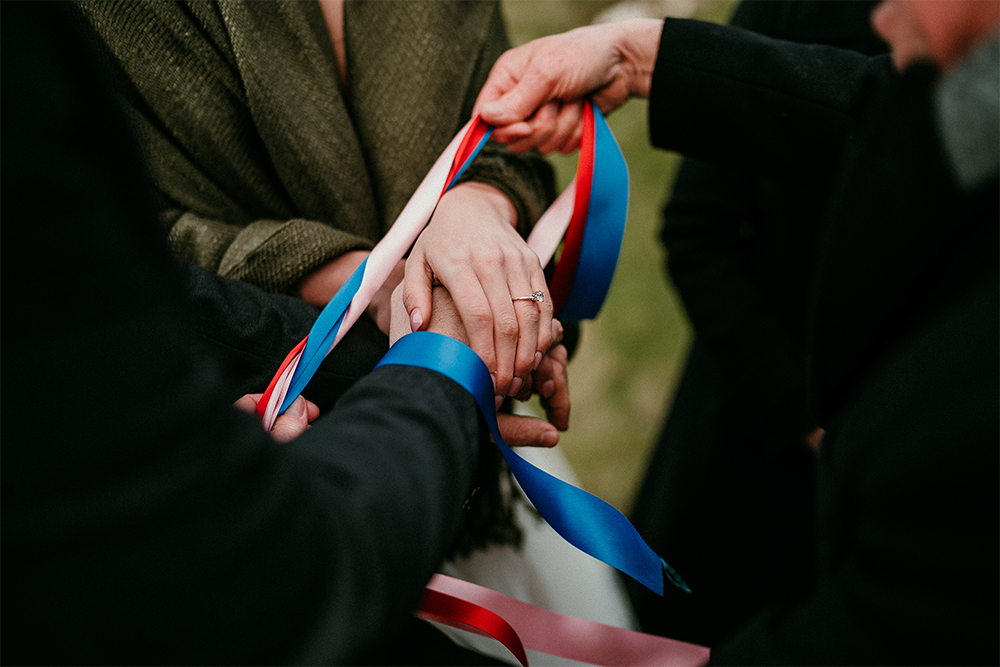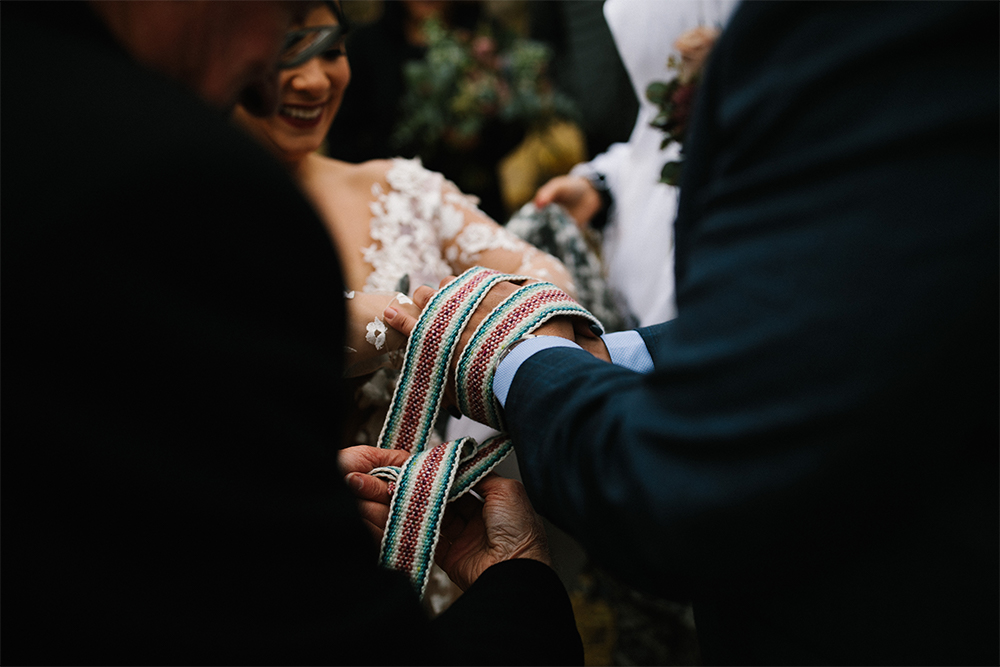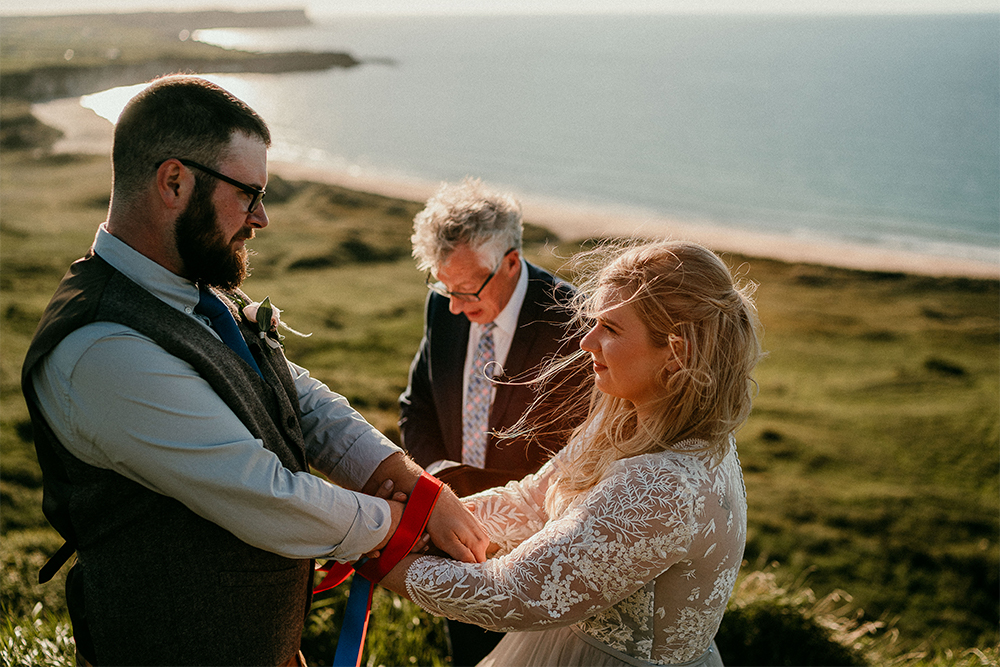Handfasting is an ancient Celtic tradition believed to date back some two thousand years.
The couple’s hands are bound together as a symbol of their union – a tradition which gave rise to the phrase “tying the knot”.
The Handfasting is usually done after the exchange of vows and rings.
The binding is done with several coloured ribbons – the colours may be chosen for their symbolic meanings or they may simply have a special meaning for the couple.
Some couples choose to use a cord incorporating the different colours.
During the ceremony the Celebrant will place the ribbons – or cord – around the hands of the couple and then tie a knot.
This can be done with the couple facing one another so all four hands are bound, or the couple may stand side by side and have two hands bound.
Once the knot is tied, the Celebrant will usually read this excerpt from a poem called Joining Hands.
Joining hands, we become a circle,
Complete, connected and timeless,
We are whole, but not exclusive,
We are one and we will live as one,
But with endless others encircled around us.
Our marriage is neither beginning nor end,
But a natural progression of our union,
Which finds us bound but not restricted,
All that was separate yields and flows,
Softly, towards the shared path of our future.
The couple then slip their hands out of the ribbons/cord while keeping the knot tied.
The ribbons/cord are kept by the couple as a keepsake and a reminder of the vows which they have taken.










